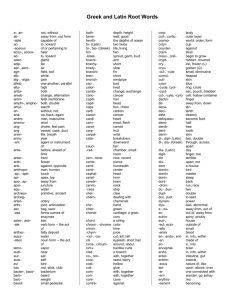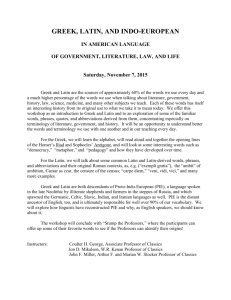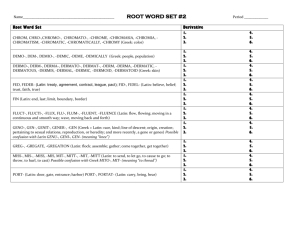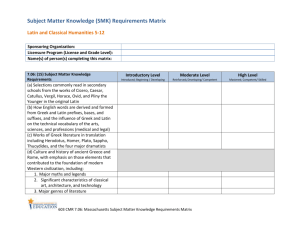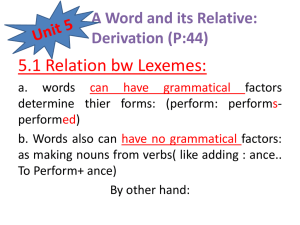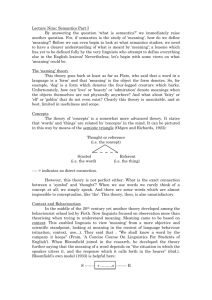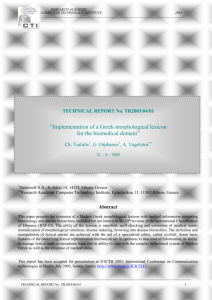Midterm 1 Prep
advertisement
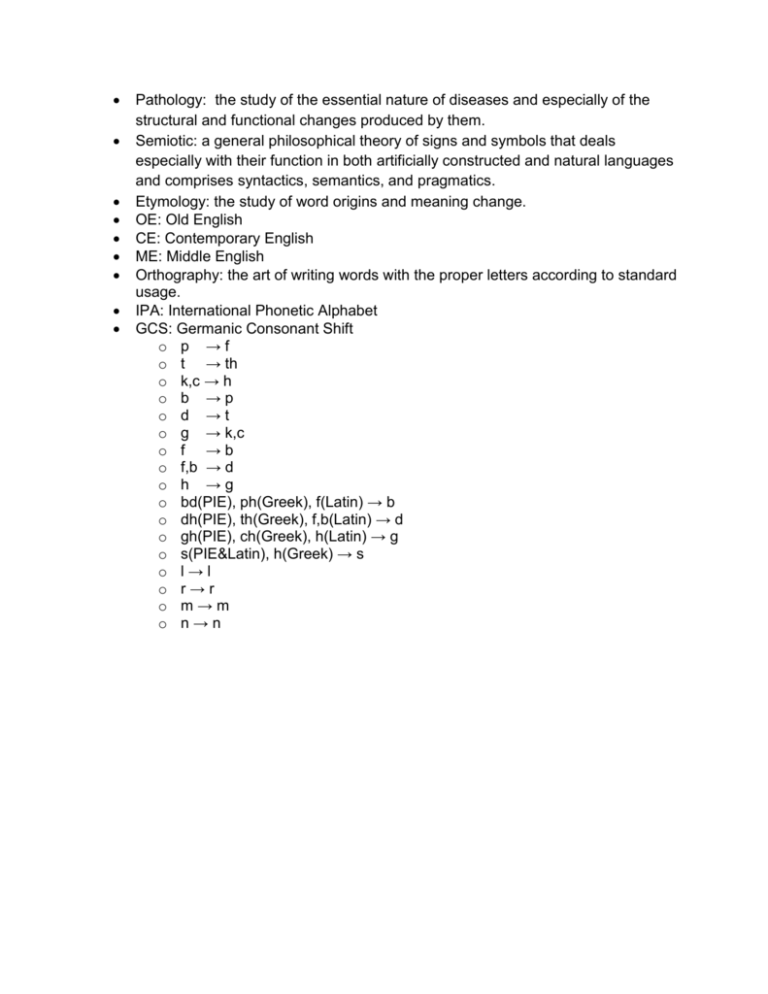
Pathology: the study of the essential nature of diseases and especially of the structural and functional changes produced by them. Semiotic: a general philosophical theory of signs and symbols that deals especially with their function in both artificially constructed and natural languages and comprises syntactics, semantics, and pragmatics. Etymology: the study of word origins and meaning change. OE: Old English CE: Contemporary English ME: Middle English Orthography: the art of writing words with the proper letters according to standard usage. IPA: International Phonetic Alphabet GCS: Germanic Consonant Shift o p →f o t → th o k,c → h o b →p o d →t o g → k,c o f →b o f,b → d o h →g o bd(PIE), ph(Greek), f(Latin) → b o dh(PIE), th(Greek), f,b(Latin) → d o gh(PIE), ch(Greek), h(Latin) → g o s(PIE&Latin), h(Greek) → s o l→l o r→r o m→m o n→n the closest we have come so far to a representation system that accords with the ‘one sound, one symbol’ philosophy is the pictograph. The word apple is cognate with a word from Old Irish. Here is the word with a consonant missing: “u_ull”. The missing sound is [b]. OE orthography was a reasonably good guide to its pronounciation. The rule that changes “y” to “i” when forming nouncs from adjectives. E.g. “happiness” from “happy” is a spelling rule. Middle English, from Latin “puncture”, from “punctus”, past participle of “pungere”. In making its way from Latin to CE, the word has undergone the rule g->k. Etymology: study of where words come from. OE: 450 CE – 1100 CE ME: 1100 CE – 1500 CE Orthography: writing. Phonetics: the science of speech sounds. Diacritic: the symbols that added on to the IPA Vowel change from OE to CE: long mid tense vowels -> high tense vowels Morphology: word structure and word building Inflection: suffixes (plural or tense) Daughter & sister languages: see page 29. Cognates: words from different languages that share the same root. GCS = Grimm’s Law Consonants defined by manner, place and voicing. If a word existed in OE, it’s an English word. The same applies to Old French (OF). Latin as a lingua fraca – like English today No such thing as pure synonymy Pictograph, cuneiform, rebus, hieroglyphic, ideograph, syllabary Pictograph: pictures that represent words Syllabary: Japanese alphabet. Aspiration: the [hhh] sound in the word ‘pot’. Phoenicians -> Greeks -> Romans Open syllables: in the vowels. Closed syllables: in the consonants. Rule conflict. Spelling reform. The word: minimal free form Compound words as a test of “word-hood” Word vs lexeme, lexeme is the abstract form Derivation creates new lexemes. Inflection does not create new lexemes. Stress shift, conversion, backformation. Morphemes: lexical, grammatical and categorical. 2 kinds of “un-“ and “-in”. Once you’ve inflected a word, derivation stops. Naturalization English has borrowed words and the rules that formed them. Hybrids. E.g. “hypertension” words that are put together from different root. English plural is lexeme + s. Singular is lexeme + nothing. Latin, plural is lexeme + m.



